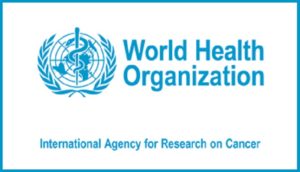June 7, 2019 – San Diego, CA. In its county’s first ever Roundup lawsuit against Bayer/AG an Australian gardener is now suing Bayer for what he claims was severe harm from using the weed killer spray.
The sued was filed in the Australian state of Victoria on Monday June 3rd. The 54 year-old, self-employed man Michael Ogalirolo said he was diagnosed recently with a rare blood cancer called non-Hodgkin lymphoma. He fully believes his cancer is directly related to his use of the spray for over 20 years.
His lawyers made this statement: (Note that it’s similar to what US lawyers have said)
“Roundup products are dangerous to human health and unfit to be marketed and sold in commerce, particularly without proper warnings and directions.”
Bayer/AG, which has not seen the writ, was aware of the statement and offered this response.
“We have great sympathy for any individual with cancer, but the extensive body of science on glyphosate-based herbicides over four decades supports the conclusion that Roundup does not cause non-Hodgkin’s lymphoma.”
Mr. Ogalirolo is seeking damages for endangering his life, cost of his care, loss of income, but more important, seeks “punishing the company for supplying a product that is not safe”.
Perhaps Australian legal terms are looking at the current Roundup cases that are now stacked up across multiple US courts. So far the pending Roundup lawsuits are now over 13,400 cases, with possibly many more coming in. The amount of legal ads were seeing in the US could swell this number greatly, as more cancer victims come forth.
What are the bases of this Australian Roundup lawsuit?
Just like here in America the premise of these Roundup lawsuits is that numerous worldwide studies has linked Roundups main ingredient glyphosate to a rare blood cancer called non-Hodgkin lymphoma. However it’s not the studies that prompted the lawsuits, it’s the clear lack of cancer warnings on Roundup labels, which is called “failure to warn”. As of this writing, Roundup products across the US still have no warning labels.
How many glyphosate studies have been done worldwide?
Dozens of studies have been published since the late 1990s analyzing the safety of Roundup’s main ingredient, glyphosate. Many of these studies link the weed killer to a deadly form of blood cancer called non-Hodgkin lymphoma and its subtypes.
A 2002 study published in the journal Leukemia & Lymphoma pooled results from two case-control studies and found people exposed to glyphosate were at a three-fold increased risk of developing NHL or a rarer subtype called hairy cell leukemia.
A 2003 study published in the BMJ’s Occupational and Environmental Medicine pooled data from three case-control studies of NHL conducted in the Midwest by the National Cancer Institute in the 1980s. The study found that men who lived or worked on a farm as adults had a 10% increase in risk for developing NHL compared to men who did not. The study also found that exposure to glyphosate in particular doubled these individuals’ risks for developing NHL.
More recent studies have also linked glyphosate to an increase in risk for NHL and its subtypes.
A Swedish study published in 2008 in the International Journal of Cancer found exposure to glyphosate increased a person’s risk for developing NHL by more than double and increased a person’s risk for developing a subtype of NHL, called B-cell lymphoma, by 87%.
In 2014, a study published in the International Journal of Environmental Research and Public Health found people exposed to glyphosate at work had a two-fold increased risk of developing B-cell lymphoma.
Even a study sponsored by Monsanto, published this year in the Journal of Environmental Sciences and Health, found a 40% increase in risk for B-cell lymphoma and a 30% increase in risk for NHL when exposed to the herbicide. The authors of the Monsanto-sponsored study were quick to point out that no “causal relationship” has been found between glyphosate exposure and NHL, meaning they could not necessarily prove it was the glyphosate that caused the increased risk in NHL or its subtypes.
Many of these studies found a dose-dependent relationship between exposure to Roundup and the development of NHL. This means the more Roundup people were exposed to, the more their risk increased for developing NHL.
In March 2015 the World Health Organization’s International Agency for Research on Cancer (IARC) conducted a study on humans exposed to the active ingredient glyphosate through agricultural work and from laboratory experiments on animals. In a published statement they concluded that “there was limited evidence of carcinogenicity [for the herbicide glyphosate] in humans for non-Hodgkin lymphoma.” They have classified glyphosate as a Group 2A substance that is “probably carcinogenic to humans.” 
In November 2015 the European Union’s Food Safety Authority (EFSA) delivered their review on the carcinogenicity of glyphosate. This study looked at exposure to glyphosate through food and came up with this statement: “all the [European Union] Member State experts but one agreed that neither the epidemiological data (i.e. on humans) nor the evidence from animal studies demonstrated causality between exposure to glyphosate and the development of cancer in humans.”
In the United States we have the National Toxicology Program (NTP). This contains a few different government agencies such as the National Institute of Health (NIH), the Centers for Disease Control and Prevention (CDC) and the Food and Drug Administration (FDA). Their main work is to maintain a list of all chemicals “known to be [a] human carcinogen” or “reasonably anticipated to be human carcinogens”.
Their latest update from November 2016 does not list glyphosate as a carcinogen.
May 2016, the World Health Organization and the United Nations’ Food and Agricultural Organization (FAO) came together to discuss the potential dangers of glyphosate in humans from residue in foods. They came to the conclusion “that glyphosate is unlikely to pose a carcinogenic risk to humans from exposure through the diet.”
California first State to declare glyphosate a cancer causing agent.
Back in 2017 the Office of Environmental Health Hazard Assessment (OEHHA) posted a Notice on its website[1] that glyphosate (CAS No. 1071-83-6) would be added to the list of chemicals known to the state to cause cancer for purposes of Proposition 65[2] with a delayed effective date due to the pending case Monsanto v OEHHA.[3]
Monsanto’s challenge was unsuccessful in the trial court. Although the case has been appealed, no stay of the listing has been granted. Therefore, glyphosate is being added to the Proposition 65 list on July 7, 2017.
Who can participate in the Roundup Cancer Lawsuits? 
Occupations that require workers to handle Roundup directly or indirectly may be most at-risk. Or even homeowners using the spray. A few examples of these occupations include:
- Crop farm workers and laborers
- People who used Roundup around their properties.
- Nursery or greenhouse workers
- Agricultural equipment operators
- Soil scientists and surveyors
You don’t have to work on a farm to be exposed to Roundup. Glyphosate residues are found in the air and drinking water near agricultural fields where they are applied, putting whole communities at risk.
If you or someone you love was exposed to Roundup and were diagnosed with non-Hodgkin lymphoma or another blood cancer, you may be entitled to compensation. The legal team at National Injury Help is ready to answer your questions and help you determine if your case qualifies for a Roundup Cancer Lawsuit.
Sources:
https://www.nationalinjuryhelp.com/defective-products/roundup-cancer-scientific-studies-glyphosate/
Free Case Evaluation
Contact Us today for a FREE, Immediate Case Evaluation
Contact Us today for a FREE, Immediate Case Evaluation
Categories
Recent post
- When Pet Owners Fail to Control Aggressive Dogs: Legal Options for Bite Victims in California
- Rideshare Driver or Passenger? Legal Steps to Take After a California Uber or Lyft Accident
- Crosswalk Accidents: When California Drivers Fail to Yield and Pedestrians Pay the Price
- Parents, Teens, and Texting: Addressing the Dangers of Distracted Driving Among Young Drivers in California
- California Rideshare Accidents Involving Minors: What Parents Need to Understand






